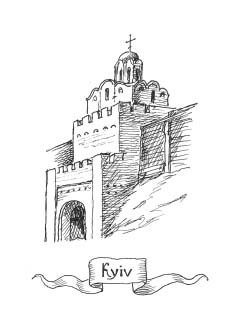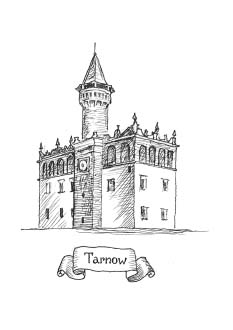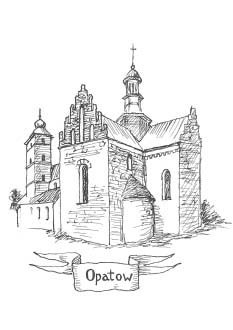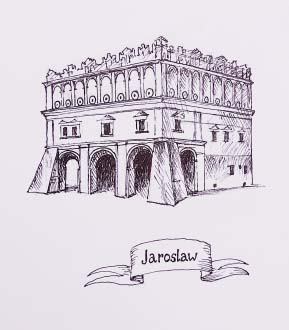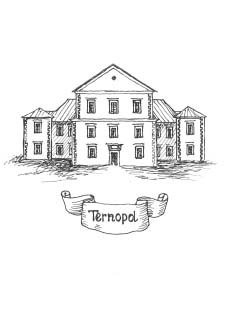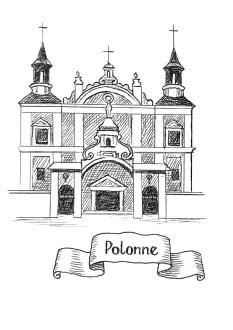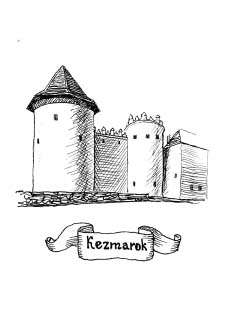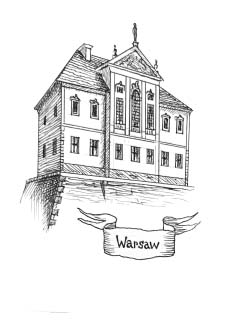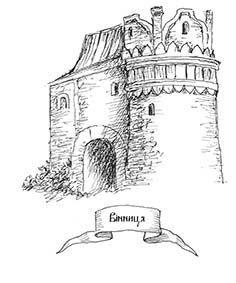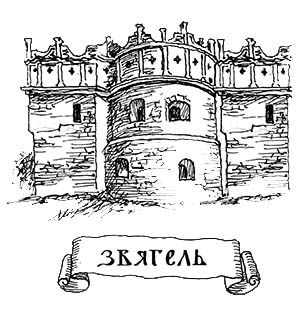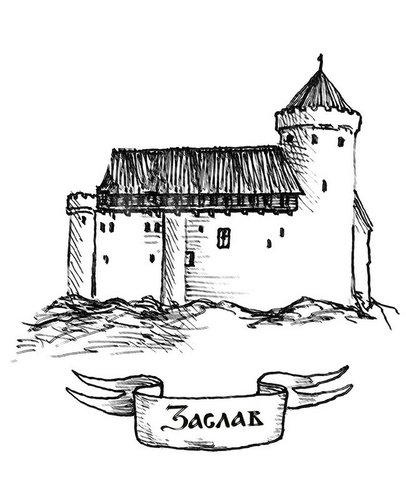Ostroh is an ancient town with a rich history and unique architectural monuments. Archaeological excavations demonstrate that the territory of the present town was inhabited from the 4th to 3rd millennium BC. As well, it was a prosperous settlement in ancient Slavic times. The first historical mentions about Ostroh come from 1100. From the 14th to 17th centuries, it was the capital of the Ostroh Principality, which, in turn, was a state with limited sovereignty.
For almost three centuries, the town was the residence of the Ostroh princely family, which gave Ukraine prominent commanders, patrons, and outstanding national leaders. Even after the demise of the direct descendants of the family of the Ostroh princes, the family crest continued to play the role of the coat of arms of the principality as a certain territorial unit. Thus, according to the will of Yanush Kostiantynovych Ostrozkyi, who had no direct heir, the Ostroh ordination was to pass to the younger branch of the family, namely the princes of Zaslavl. In case of demise of the last, it should have passed to the knights of the Order of Malta with the preservation of the coat of arms of Ostroh princes, which continued to represent the territory of the ordination (the principality). Later the coat of arms of the Ostroh principality appeared on the seals of the Lyubomyrski family, to whom the ownership of the Ostroh ordination passed in 1673. Respectively, they called themselves “xiaze na Ostrogu and Zaslawiu” (“princes of Ostroh and Zaslavl”).
Since the '70s of the sixteenth century, Ostroh, being the capital of the principality, became the largest center of education and culture in Ukraine. Musical art was dramatically developed in the town (e.g. the Ostroh chant). It was the center of prosperous shops of goldsmiths, gunsmiths, potters, etc. Around 1576, thanks to the efforts of Prince Vasyl-Kostiantyn, the first higher school, named by contemporaries “the Academy”, was founded in Eastern Europe. Two types of cultures, Byzantine and Western European, were firstly combined in this higher education institution. This fact provided the foundation of its uniqueness and originality. The Renaissance of the Ukrainian people is assumed to be associated with the Ostroh Academy.
The ancient Castle Hill is located at the southeastern outskirts of the historic part of Ostroh. The first wooden fortifications are the remnants of the ancient Slavic settlement of the 11th-12th centuries which were situated at this place. They were destroyed by the Tatar hordes in 1241. In the middle of the 14th century, Prince Danylo Ostrozkyi restored the destroyed buildings and built the stone Tower Murovana, located at the southeastern part of the Castle Yard on the hill. It was first mentioned in 1386.
Murovana Tower is a unique defensive structure of medieval Volhynia. It belongs to the type of residential defensive towers. Its walls reach a thickness of 2.6 m in some places. Formerly, stocks of provisions and gunpowder needed for long-term protection of the fortress were stored in the lower tier (at the basement). A deep well also was dug there. The basement and middle floors consist of four rooms. Living rooms were arranged at the top of the structure. Unfortunately, the tower has survived to our times partially rebuilt, without upper floors in particular. In 1797, the upper tier of the building was dismantled and later rebuilt in a modified and simplified form. From 1913 to 1915 the tower was restored for the needs of the museum by the Brotherhood named after princes of Ostroh.
The New (Round) Tower is located in the southwestern part of the Castle Yard. It got its name from the fact that at the time of construction (late 16th century.) it was the newest structure at Castle Hill. The tower was built in that way it reinforced the corner of the defensive walls and was strategically embedded in the Castle's defense system. The construction is crowned with a strip of hinged loopholes with a blind arcade decorated with figured teeth. Its defenders could fire at the enemy simultaneously from almost forty loopholes and, moreover, the firing area was equal to 270 degrees.
The Epiphany Cathedral stands in the northern part of Castle Hill. It is unknown exactly when the temple was constructed. According to the legend, Prince Vasyl Krasnyi began construction in the 15th century and his son Kostiantyn Ivanovych finished it. The date of 1521, engraved on the north wall, some researchers associate with the time of its construction, others with the adaptation of the temple for defense requirements. Presumably, its north wall was thickened and equipped with four loopholes for guns and embedded as part of the castle wall. In 1636, after the conversion of the last representative of the family of Ostroh princes to Catholicism, the church was closed. The church stood empty for more than 200 years and during this time it turned into a ruin. It was restored in the period from 1887 to 1891. A temple was rebuilt over the old foundation and designed to replicate the old building. The northern, strongest wall of the old structure was preserved and included in the construction of the new temple. But during the reconstruction certain changes were made and today the temple has practically become a monument of architecture of the 19th century with elements of the 16th century.
Lutsk and Tatar gate towers, built in the 16th century, have been also preserved in the town. Due to the fact that the towers performed the same functions, namely the defensive tower and the town gates, they are almost identical. Tatar gate survived less as it lost much of the rounded part of the building. It was named after the area of the town inhabited mainly by Tatars. It was engineered to defend the entrance from the side of the road to Zviahel (contemporary Novohrad-Volynskyi). The monument is a unique type of fortified gates that combines the functions of an entrance gate and a defensive tower.
The Lutsk Tower was aimed to defend the town from the side of Lutsk. Like Tatarska, it was both a defensive structure and a gate. Initially, it was two-storeyed, later it was completed with an attic with loopholes, which provided the structure the character of civil architecture. On the 10th of December 1985, the Museum of Books and Printing was founded there.
 Virtual Heritage Museum OF THE PRINCES OF OSTROG
Virtual Heritage Museum OF THE PRINCES OF OSTROG






